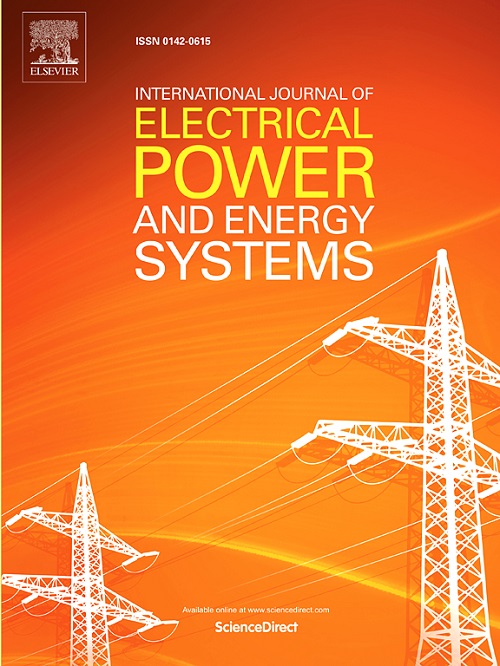基于相位选择和零流预测的大容量发电机故障电流中断策略
IF 5
2区 工程技术
Q1 ENGINEERING, ELECTRICAL & ELECTRONIC
International Journal of Electrical Power & Energy Systems
Pub Date : 2025-09-24
DOI:10.1016/j.ijepes.2025.111162
引用次数: 0
摘要
大容量汽轮发电机(HTG)馈送的故障电流的高不对称程度(AD, > 100%)导致电弧能量(Earc)高,阻碍了发电机断路器(gcb)的可靠中断。传统的随机时刻同步三相分离的GCB存在电弧时间不可控、电弧弧高的问题,严重影响了GCB的中断可靠性。为了限制Earc,应该应用具有相分离操作机制的gcb,以及第一极清除(FPTC)选择和理想电流零预测。本文的贡献是:首先,揭示了应选择具有中等AD的相位作为FPTC,并且应控制触点在小半波结束时在电流零附近分离。其次,结合FPTC选择和理想零电流预测,提出了一种在随机故障情况下可将Earc限制在50 kJ以内的中断策略,提高了GCB在高不对称电流下的中断可靠性;仿真结果验证了该方法的有效性。本文章由计算机程序翻译,如有差异,请以英文原文为准。
Interruption strategy of fault current fed by high-capacity generator based on phase selection and current-zero prediction
The high asymmetrical degree (AD, >100 %) of the fault current fed by high-capacity turbine generator (HTG) results in high arc energy (Earc), hindering reliable interruptions of generator circuit breakers (GCBs). Traditional GCBs with simultaneous three-phase separation at random moments suffer from uncontrollable arcing time and high Earc, severely undermining the interruption reliability of GCB. To limit Earc, GCBs with phase-separated operation mechanism should be applied, along with the first pole to clear (FPTC) selection and ideal current-zero prediction. Contributions of the paper are: first, it is revealed the phase with medium AD should be selected as the FPTC, and contacts should be controlled to separate near the current zero at the end of a small half-wave. Second, combined with FPTC selection and ideal current-zero prediction, an interruption strategy is proposed, which can limit Earc to <50 kJ in random faults, improving the GCB interrupting reliability for highly asymmetrical currents. Simulation results verified its effectiveness.
求助全文
通过发布文献求助,成功后即可免费获取论文全文。
去求助
来源期刊
CiteScore
12.10
自引率
17.30%
发文量
1022
审稿时长
51 days
期刊介绍:
The journal covers theoretical developments in electrical power and energy systems and their applications. The coverage embraces: generation and network planning; reliability; long and short term operation; expert systems; neural networks; object oriented systems; system control centres; database and information systems; stock and parameter estimation; system security and adequacy; network theory, modelling and computation; small and large system dynamics; dynamic model identification; on-line control including load and switching control; protection; distribution systems; energy economics; impact of non-conventional systems; and man-machine interfaces.
As well as original research papers, the journal publishes short contributions, book reviews and conference reports. All papers are peer-reviewed by at least two referees.

 求助内容:
求助内容: 应助结果提醒方式:
应助结果提醒方式:


